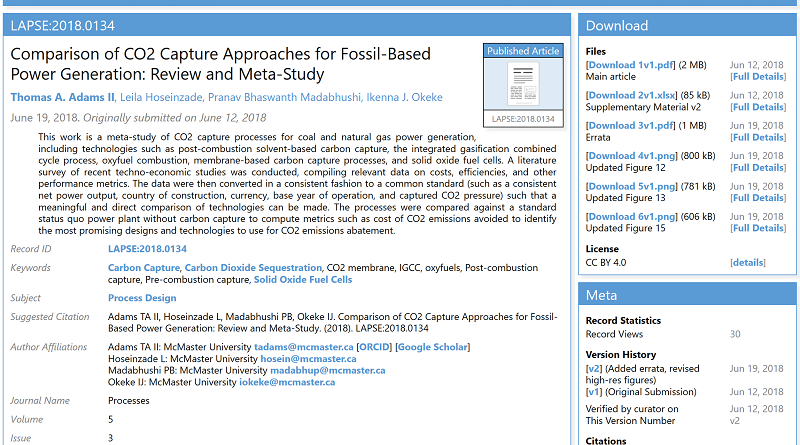New! LAPSE: Living Archive for Process Systems Engineering
Announcing LAPSE: The Living Archive for Process Systems Engineering!
Unveiled today at the Process Systems Engineering 2018 conference, LAPSE is a digital repository for the process systems engineering community for the storage, sharing, and networking of research and education materials. Use LAPSE to store and share your:
- Pre-prints
- Post-prints
- Open access articles
- Model & simulation files
- Educational materials
- Source code
- Data
- Conference presentations
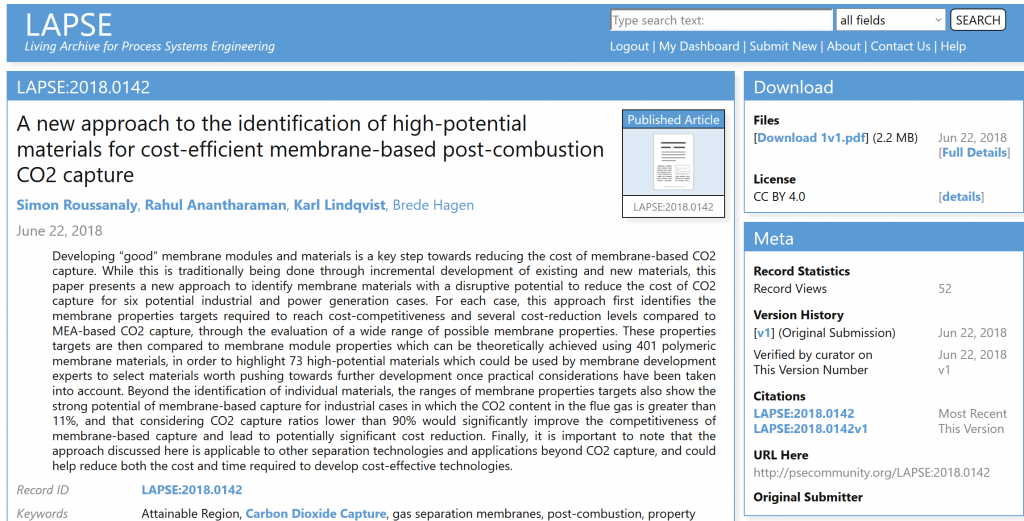
Record pages have all the necessary Google Scholar meta data under the hood for inclusion in their system, as well as a complete version control system.
Why Use LAPSE?
LAPSE was made at the request of some of our partner organizations to help:
- Meet funder open access requirements
- Existing repositories (institutional) have limited exposure
- Want to make research accessible where it will actually be seen
- Want a culture of openness, model sharing
The idea is that LAPSE is more than just a repository, or just a place to put your pre-prints for the sole purpose of meeting funding requirements. LAPSE is PSE community space where many users come together to find and share research, models, data, code, and educational material. Moreover, it has a unique linking system in which you can connect your submissions to other submissions in LAPSE, arXiv, or anything with a DOI (handle.net tag support coming soon). With this, you can create visual Research Maps that provide an easy to understand visual representation of how your work relates to and connects with other research, data, models, or other digital materials.
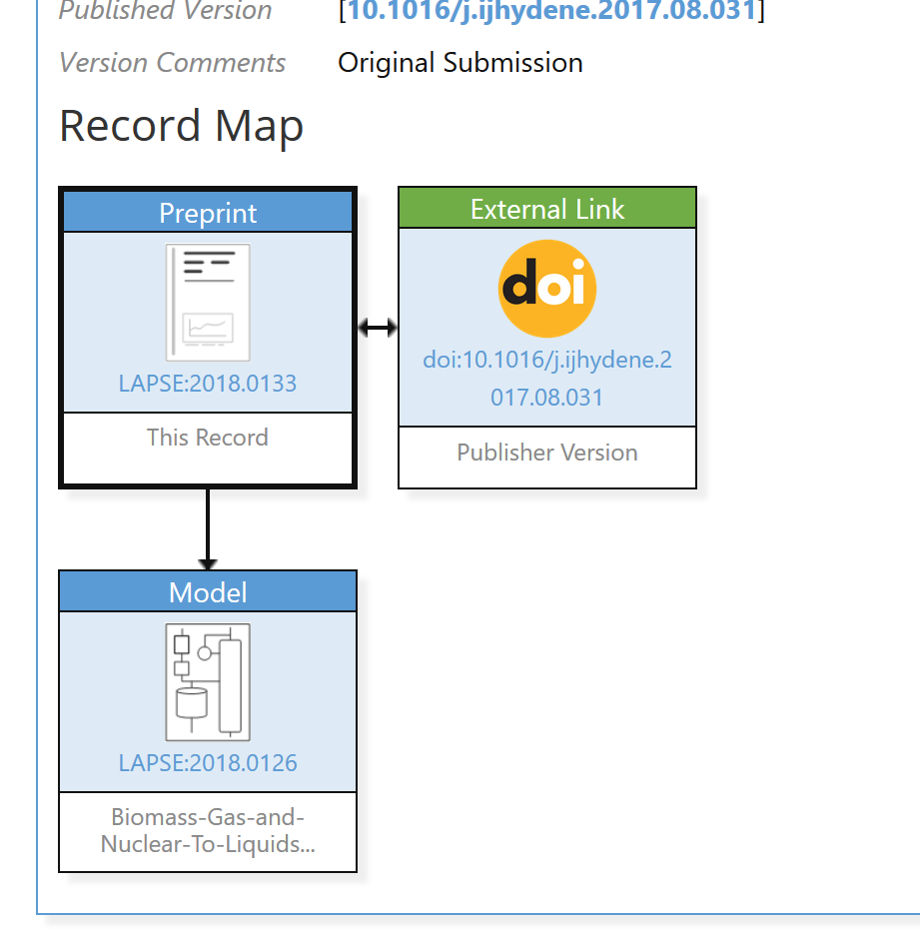
Record maps will commonly be used for:
- Big picture overviews of your research program
- Connect a research paper with conference slides to the presentation of that paper
- Connect your pre-print / post-print to the official publisher’s version
- Show how the work derives from or leads to the work of others
- Part I / Part II paper sequences
- Papers that connect to or are a part of a master’s or PhD thesis.
- Important works of others that influenced the present work.
Embargos
Also unique to LAPSE is the ability to embargo submissions until a specified date. This is very convenient since most publishers have embargo restrictions. With the embargo system, you don’t have to wait until the date to submit everything, you can do it up front and then set the embargo date. What’s more, we are working with publishers to maintain a database of embargo periods which are different for each journal and type (pre-print, post-print, full article). If you are submitting a research article for a journal in our database, you will be warned if you fall into an embargo category, and will be presented with a default date and checkbox to enable it.
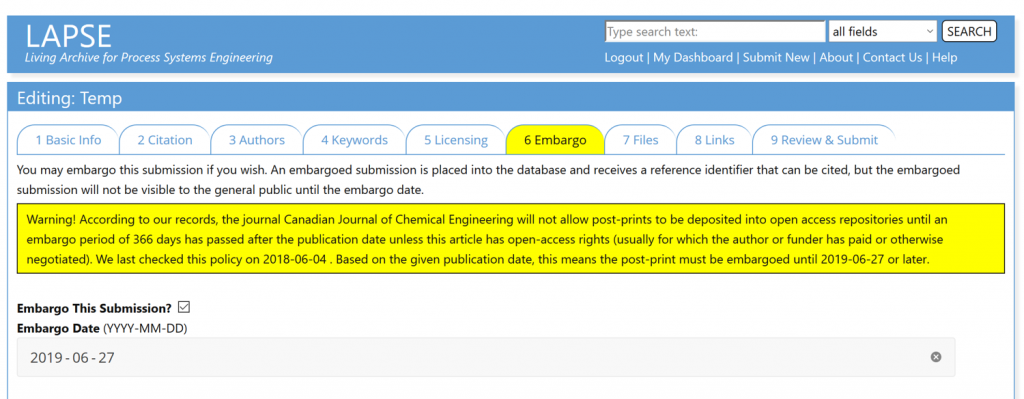
Licenses
Most publishers whose policies permit pre-print/post-print/full article deposits in open repositories like LAPSE require the distribution to come with a license, usually a particular Creative Commons variant that can differ by article type and journal. Our database has these requirements in there for most PSE-relevant journals and will let you know the appropriate choice. The licenses will appear on all file and record pages, as well as in automatically-generated header pages (see below).
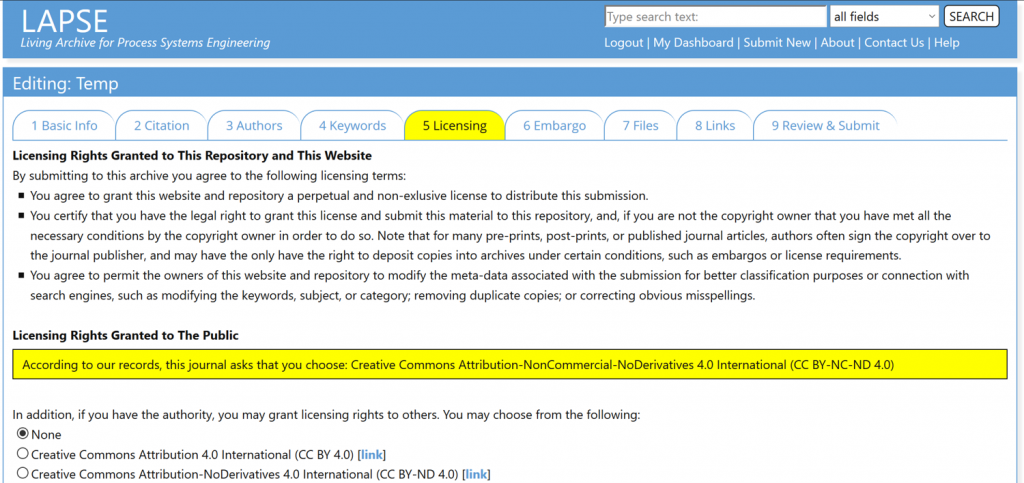
In addition, many journals require certain legal text or disclaimers to accompany pre-prints or post-prints. Our system automatically puts that information on header files as required (if contained in our journals database). Pre-prints, post-prints, and article submissions all receive an automatically generated header page which has specific formatting for Google Scholar pickup as well as the necessary licensing and legal text.
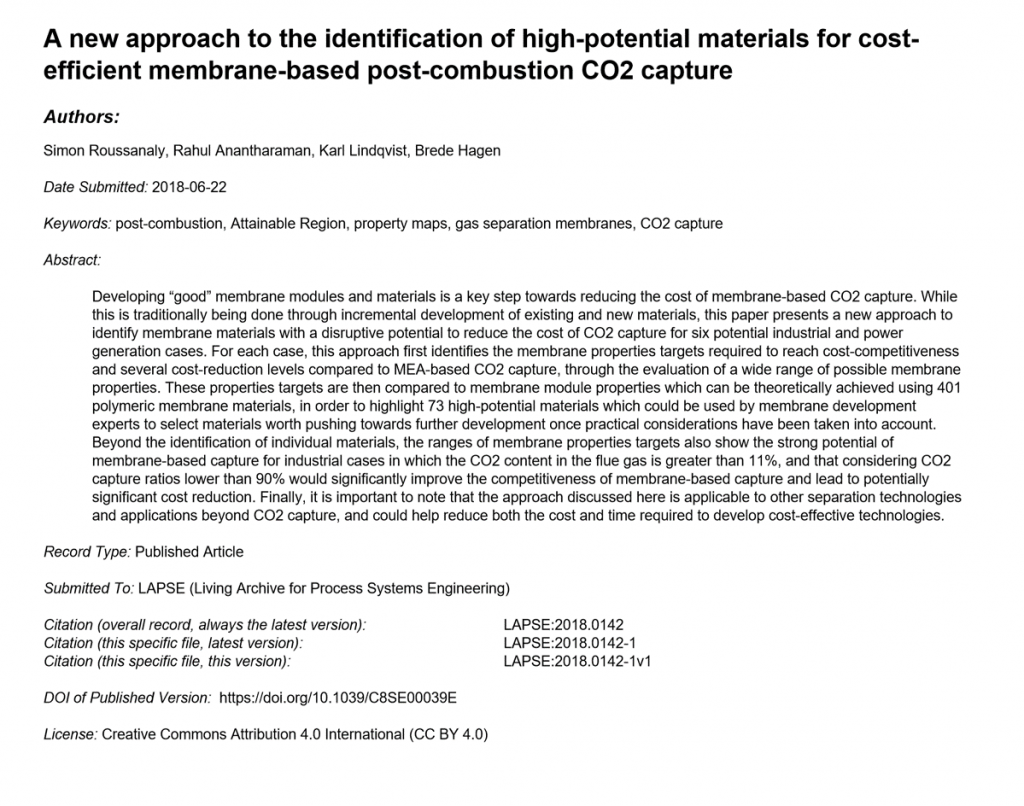
Find out more about LAPSE here, or visit LAPSE now!
